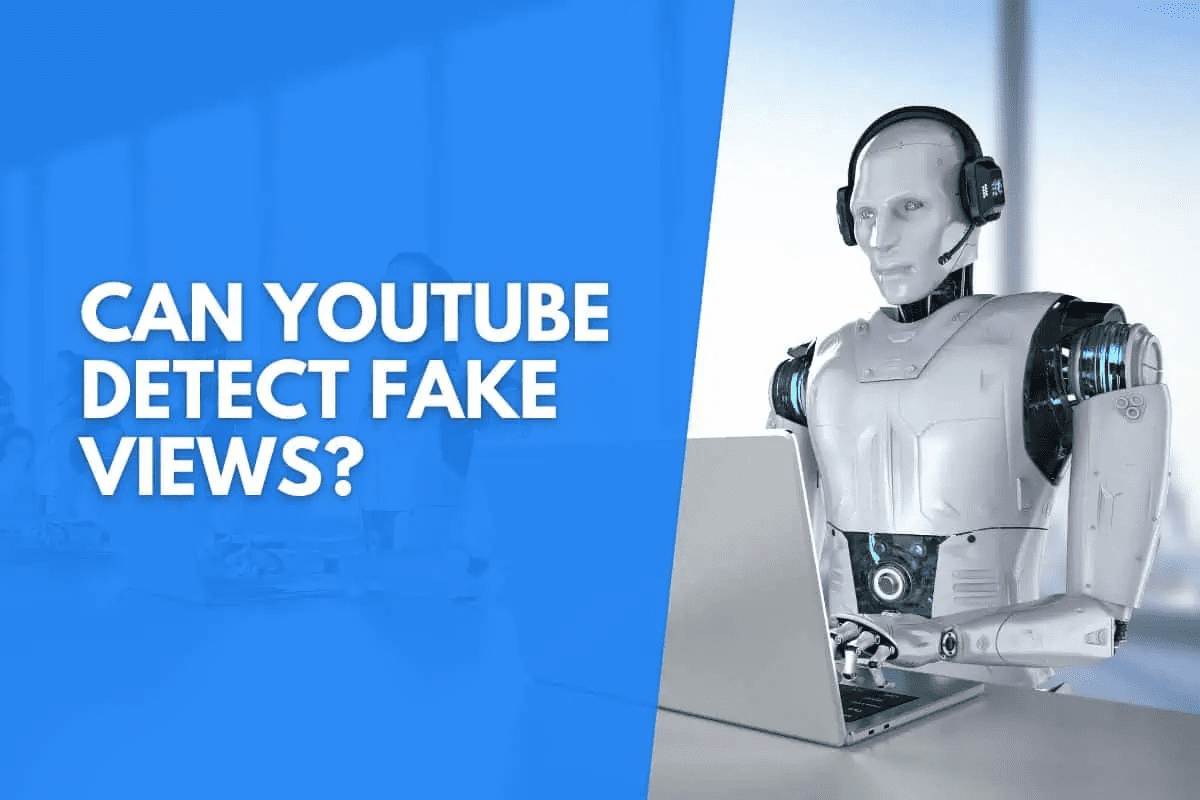YouTube is a popular video-sharing platform that content creators and businesses use to promote their products and services. The number of views a video receives on YouTube is a key metric that measures the popularity and success of a video. However, some users may artificially inflate their videos’ view count using various techniques such as buying views, using bots or view farms, and click fraud.
To maintain the integrity of its platform, YouTube has implemented various measures to detect and prevent fake YouTube views. In this article, we’ll discuss how YouTube detects fake views.
What are fake views on youtube?
On YouTube, fake views are created artificially and do not originate from actual people watching the video. Usually, these views are produced using scripts, bots, or view farms that automatically generate content.
To make their films look more popular or successful than they are, some users may try to artificially inflate the number of views on each of their movies. Third-party businesses that guarantee to offer many fake views quickly can be used to acquire real views.
Nevertheless, these opinions are prohibited under YouTube’s terms of service and may lead to removing the video or channel from the site. Moreover, fraudulent views can harm the image of the content producer and deceive advertisers who want to invest in loyal and active audiences.
Ways to detect fake views
Validation of Opinions
YouTube verifies every view on a video to ensure it’s real. YouTube records the view when a user clicks on a video and keeps track of it on its servers. Not all opinions, nevertheless, are considered valid perspectives. To verify that a view is legitimate, YouTube looks at several variables. These elements include the length of the view, where the view came from, and the view rate.
Viewing Time
YouTube tracks how long viewers watch a particular video. A viewer’s click on a video followed by an abrupt closeout will not be recorded as a view. YouTube only records views when a user spends a specific amount of time watching a video. This makes sure that only actual viewers are included in the view count.
Source of the View
YouTube checks the source of the view to determine if it is legitimate. If a view comes from a bot or a server farm, it will not be counted as a legitimate view. YouTube also checks the Viewer’s geographic location to ensure the view comes from a legitimate location.
View Rate
YouTube checks the view rate to determine if there are sudden spikes in views. If a video suddenly gets many views quickly, YouTube may flag it as suspicious activity. This ensures that views are generated naturally and not artificially inflated.
The View Farms and Bots
Bots and view farms are the two most popular ways to produce phony views. View farms are groups of individuals paid to watch films and boost view counts artificially, whereas bots are automated scripts that replicate the behavior of actual users.
Geographical context
To verify that a viewer is coming from a real place, YouTube verifies their location. YouTube will mark a viewer’s IP address as suspicious behavior if it originates from a location notorious for view farming.
The comportment of the Viewer
YouTube monitors user activity to ensure it is consistent with that of a genuine person. YouTube, for instance, determines if a user is commenting, subscribing to channels, or clicking on other videos.
Rate of Engagement
To ascertain whether the views are coming from actual viewers, YouTube examines the engagement rate of the video. A video may be marked as suspicious behavior if it has many views but few interactions (likes, comments, and shares).
View Buying
Purchasing false views from third-party services is another popular way to produce them. These services guarantee that a video will receive a lot of views quickly.
Source of the Opinions
If views are coming from a third-party provider, YouTube verifies the source. YouTube will mark the behavior as suspicious if the views originate from a well-known view-buying service.
Engagement Level
To ascertain whether the views are coming from actual viewers, YouTube looks at the engagement rate of the video. A video may be marked as a suspicious activity if it has a lot of views but only a few interactions (likes, comments, and shares).
Pros and Cons of buying fake youtube views
Pros of Purchasing Fake YouTube Views:
- Quick Views: One of the biggest advantages of purchasing false views is that it may provide content creators rapid pleasure. The creator may find it pleasing because the video will look to have more views than it does.
- Increases Social Proof: The premise that individuals are more inclined to believe and adhere to something others have already approved of may be established by having many views on a video. A video with many views may appear more popular and alluring to prospective viewers.
Cons of Buying YouTube Fake Views:
- The danger of Being Caught: Purchasing phony views carries a certain risk of being discovered. YouTube has advanced algorithms and techniques to identify fraudulent views, and if a video producer is found out, they may be subject to harsh punishments.
- Low Engagement: Fake views are frequently produced by bots or view farms, meaning they do not originate from real people. Due to the low interaction rate (likes, comments, and shares), the video may look less trustworthy and alluring to potential viewers.
Conclusion
The risks and disadvantages of purchasing phony views greatly exceed any possible advantages, even if it could appear like a simple and fast approach to increase a video’s visibility. Instead, content producers should concentrate on developing a loyal, engaged audience by producing excellent material that appeals to their audience. This is a more ethical and long-lasting way to expand a YouTube channel and make a solid online presence.
